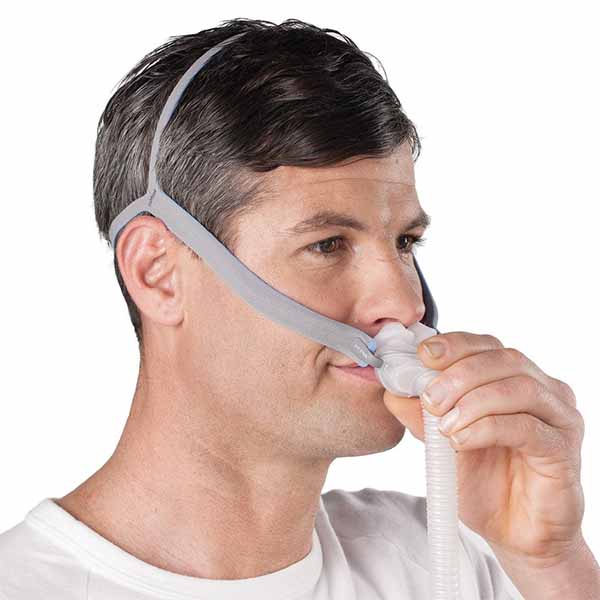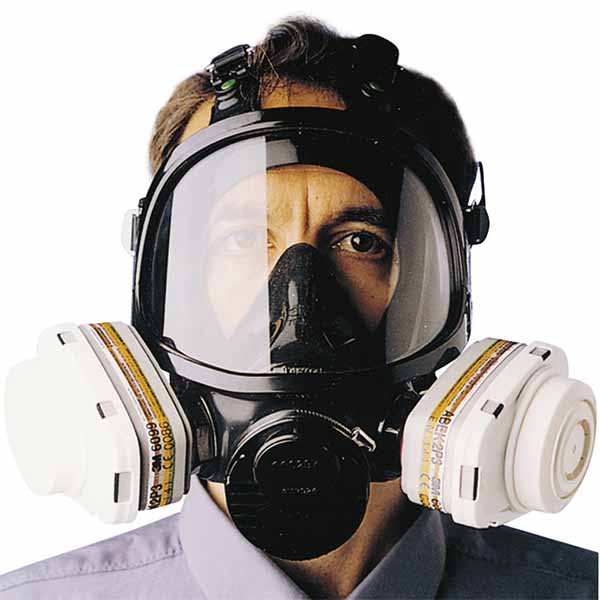CPAP mask vs nasal pillows: What is the difference between ? Read our guide to find out.
Finding a mask with the right fit is one of the most important things about the entire CPAP therapy. A comfortable mask with a firm seal will certainly make the treatment effective.
Here’s a comparison of some CPAP masks available in the market.
In this Guide
Nasal Mask
A nasal mask usually sits around the nose and is triangular. It comes with a headgear that holds it in place with straps going around the nasal opening. Nasal masks come in different shapes and sizes for a more customized fit.

Nasal masks are ideal for those who breathe through the nose. Besides, mouth breathers can also use this mask with the chin strap that helps keep the mouth shut during sleep.
People Who Shouldn’t Use the Nasal Mask
Those who breathe through the mouth at night. However, it can be effective if used with the chin strap that goes over the head and right under the chin to help keep the mouth shut as you sleep. It also doesn’t work well for those with facial hair as it tends to prevent proper sealing of the mask.
Tips for Buying Nasal Masks
Nasal masks tend to cause irritation especially on the nose bridge due to its construction. The mask comes in contact with the face strapped around the head.
Nasal Pillow Masks
A nasal pillow is a cushion that seals below the nostril and feature a stretchy strap that holds it in place going around the back of the head. This mask is less invasive compared to its counterparts.

Who Can Use Nasal Pillow Masks?
- People who breathe through the nose at night.
- Claustrophobic individuals since it doesn’t obstruct your view and contact with the face is very little.
- Those who like watching TV or reading before bedtime.
- Those with facial hair that prevents other types of masks from sealing properly on the skin.
- Active sleepers – those who move around a lot in their sleep.
Who Can’t Use Nasal Pillow Masks?
- You can get really uncomfortable if the CPAP pressure is quite high because the air blowing through the small holes will be a lot.
- Those with allergies and nasal congestion that makes breathing through the nose hard.
- Mouth breathers
Tips for Buying Nasal Pillow Masks
- It tends to cause nose bleeds and nasal dryness
Full Face CPAP Mask
Full face masks usually sit on the face covering the entire nose and mouth. Most people have this mask in mind when thinking about CPAP therapy. Compared to other types of masks, the full face occupies a larger surface area even though modern designs are a bit smaller.

Who Can Wear Full Face CPAP Masks?
Full CPAP masks are designed for mouth breathers. Here are other people that can wear the masks:
- Those dealing with nasal congestion. Some patients only use the full face CPAP masks when struggling with seasonal allergies and cold then resort to nasal masks.
- Patients with higher pressure settings. Full face masks usually make high pressure tolerable
- Claustrophobic individuals as it only touches the other part of the face
- BiPAP users since they are prone to leaks through the mouth
Tips for Buying Full Face CPAP Masks
- The large surface area can result in leaks causing dry eyes
- You cannot watch TV, wear glasses or read while using the full face mask
- It’s not ideal for stomach sleepers
Which is the Most Expensive Mask?
Depending on the provider, manufacturer and style, cash patients notice a huge difference when it comes to prices. Insurance only recognizes two types of masks. The masks have cushions that needs replacement to ensure optimum use.

Nasal pillow and nasal masks
The insurance classifies these two as one. Most insurances usually use Medicare guidelines for mask replacement once after about three months with the price ranging from 45 to 125 dollars per mask. Cushions are replaced twice in a month but it depends with the insurance company with a price range of 10-35 dollars.
Full face CPAP masks
A7030 is the CPT code for a full face mask with reimbursement ranging from 70 to 180 dollars. Insurances also use Medicare guidelines for mask replacement once in three months and cushions once a month with a price range of 25 to 50 dollars each.

